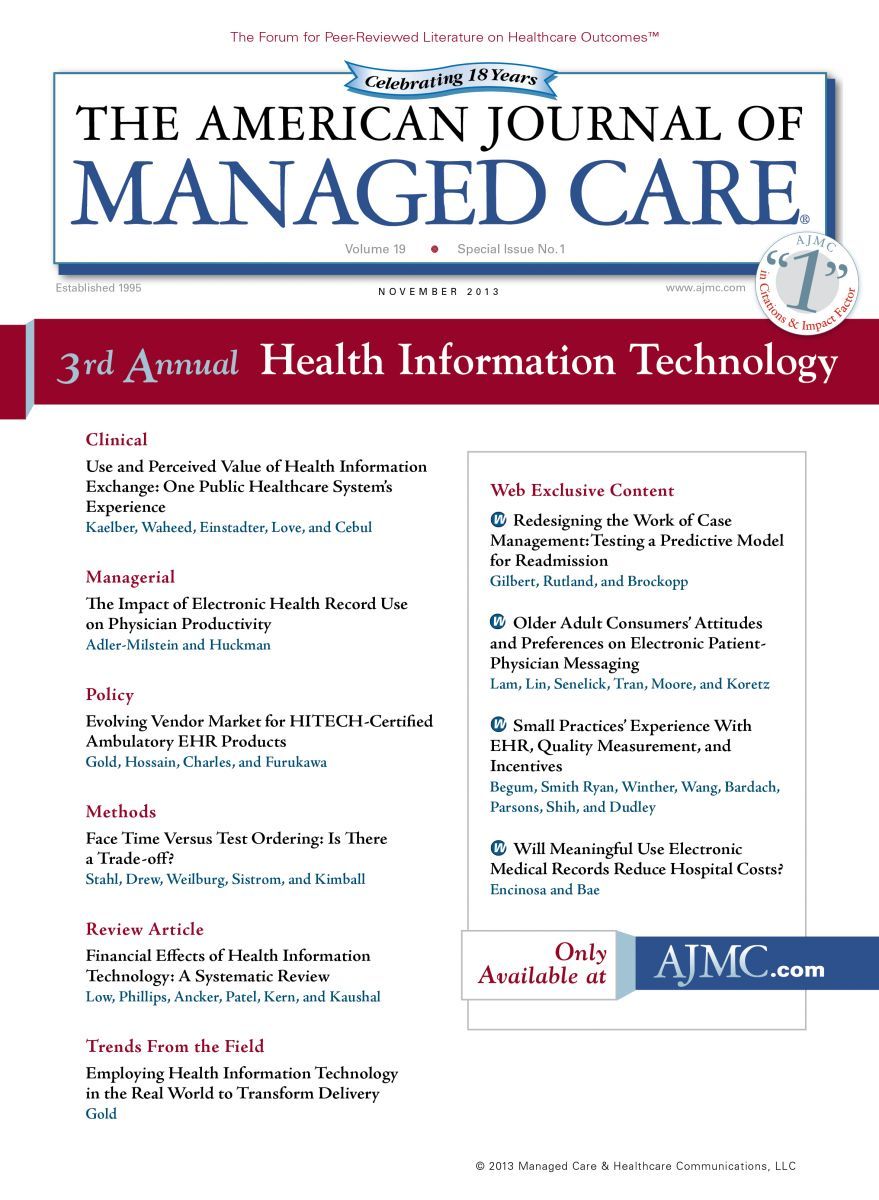- Center on Health Equity & Access
- Clinical
- Health Care Cost
- Health Care Delivery
- Insurance
- Policy
- Technology
- Value-Based Care
The Data Revolution Comes to Healthcare
The American Journal of Managed Care was founded in 1995, during the last period of serious reexamination of how healthcare is paid for and how it's delivered. Nearly 20 years later, after the retreat of the first managed care revolution, per capita healthcare costs have more than doubled, and there is again a strong movement toward payment and delivery system reform.
The American Journal of Managed Care was founded in 1995, during the last period of serious reexamination of how healthcare is paid for and how it’s delivered. Nearly 20 years later, after the retreat of the first managed care revolution, per capita healthcare costs have more than doubled, and there is again a strong movement toward payment and delivery system reform. At a roundtable of accountable care organizations, I posed a discomfiting question to the leaders there: “What makes you believe that this time is different?” One replied, “We can’t UM (utilization manage) the patient any more, but we can manage the care process (and providers) a lot better now.” Another said, “We have tools and data that we could only dream of before,” and many nodded.
At the heart of these new capabilities is the ability to apply the digital tools that have revolutionized retail, manufacturing, finance, and even elections, to healthcare. The critical first step in this process was to digitize healthcare data and healthcare processes, spurred by the Health Information Technology for Economic and Clinical Health Act and the “Meaningful Use” Health IT Incentive program. As of October 2013, 95% of hospitals and over 90% of eligible professionals are participating in the program,1 and strong majorities of each have already earned incentive payments in the first stage of the program. The second stage of Meaningful Use and the 2014 EHR certification criteria and standards will take a big step forward in enabling the secure sharing of patient information between providers and with patients themselves.
This issue of AJMC provides many reasons to be hopeful that the combination of changing incentives and new data tools can indeed deliver better care at lower cost. Hospitals are increasingly held financially accountable for the safety of their care, and Encinosa and colleagues find over 60% lower odds of adverse drug events in hospitals that have adopted the 5 medication-related measures in Stage 1 Meaningful Use. Hospital readmission penalties are set to double to 2% of total Medicare revenue, encouraging the use of prediction models such as the ones tested by Gilbert and colleagues, and the development of ever more accurate models using more granular clinical and patient-generated data. The Physician Value Modifier will reward physician practices that achieve higher quality scores, and Begum and colleagues report that even small practices can have positive experiences with such pay-for-performance programs if supported by feedback from their own electronic health records (EHRs) and an improved sense of clinician control over measured performance. Providers will be rewarded for maintaining engagement with their patient cohort, and evaluated on the basis of patient experiences with care; they will increasingly welcome and promote—rather than resist—the electronic patient messaging systems studied by Lam and colleagues. Accountable care and capitated payment arrangements incentivize better care coordination and reduction in unnecessary hospitalizations; these activities will benefit from, and sustain, the health information exchange services described by Kaelber.
But there are warning signs here as well. As described by Low et al, the question of the financial benefits of health information technology (HIT) must start with the question: “Benefit to whom?” Under a fee-for-service regime, reductions in the total cost of care will benefit payers but not providers. Conversely, financial benefits to providers from increased billing represent financial losses to payers. Greater uptake of payment models that align incentives toward better health and lower cost are critical to achieving the full societal benefits of information technology (IT) tools. The marketplace for EHR described by Marsha Gold is robust and competitive, but the meaningful use functionalities for population health management and patient engagement are still by and large treated as compliance exercises rather than market driven.
But perhaps most instructive is the paper by Adler-Milstein and Huckman, who found that the impact of HIT on physician productivity is deeply intertwined with the practice context and implementation approach. This concept is unsurprising, but the finding is novel and highlights the need for continual learning about what works. Fortunately, this is where the infrastructure of IT is unlike other technology interventions. As demonstrated by Stahl and colleagues at Massachusetts General Hospital, this digital infrastructure contains within it the ability to monitor and learn from the very process of delivering care.
This time is different.

Trends in Hospital Pricing for Vulnerable Emergency Department Users, 2021-2023
December 4th 2025Self-pay emergency department prices rose significantly from 2021 to 2023, especially at for-profit and system-affiliated hospitals, highlighting growing affordability challenges for uninsured and underinsured patients.
Read More

